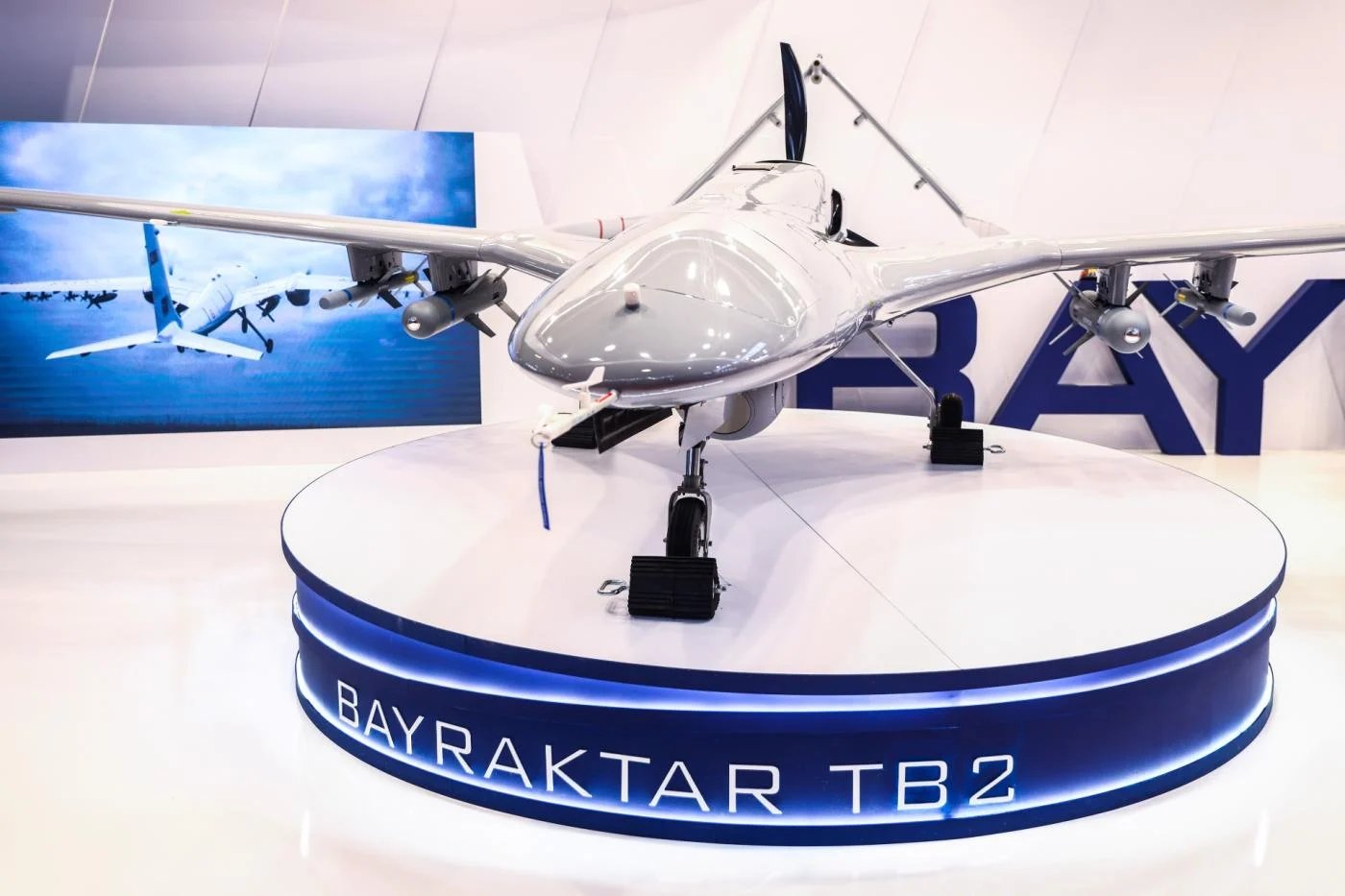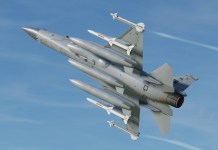Pakistan Air Force is reportedly incorporating its newly acquired drones, including Turkish-made Bayraktar TB2 unmanned aircraft, within the nation’s air defense network.
According to Janes, the Southern Air Command of the PAF is integrating these newly acquired unmanned aerial vehicles into its air defense network. On September 28, Pakistan first showed off its Bayraktar TB2, a medium altitude long endurance (MALE), during an Air Force drill.
In March of this year, it was initially reported that Pakistan had acquired the Turkish Bayraktar TB2 drone to conduct assault and ISR operations. The number of drones delivered to Islamabad has not been made public by either side.
In late May, satellite images revealed the presence of one Bayraktar TB2 at PAF’s Murid Airbase. The exercise on September 28 was the first official documented usage of Pakistan’s Bayraktar TB2s.
Imagery from Air Force Base Murid, #Pakistan shows a likely Baykar Bayraktar TB2 UAV onsite, range ring allows visualization of the area the drone could operate over pic.twitter.com/TgFPVhPWoc
— Damien Symon (@detresfa_) May 30, 2022
According to a statement released by the PAF on September 28, the purpose of an operational air defense exercise was to promote “synergy” in counter-air operations. The PAF released a video of the drill, which featured two TB2s and at least three Leonardo Airborne and Space Systems Falco UAVs.
Pakistan air force media wing @DGPR_PAF released details of Air Defense Exercise. PAF is putting special focus on unmanned aerial platforms for different roles. Latest addition in PAF fleet is Turkish made TB-2 tactical attack drones. During the ex PAF deployed almost all its 1/2 pic.twitter.com/8BlvtEL85v
— Global Conflict Watch (@_ConflictsWatch) September 28, 2022
The PAF Chief of Air Staff, Air Chief Marshal Zaheer Ahmed Baber Sidhu, also reportedly visited an undisclosed operational airbase to evaluate how newly acquired UAS were incorporated into the PAF’s operational framework.

Pakistan is also believed to be acquiring the Akinci drone, “Raider,” in Turkish. The Akinci is a high-altitude, long-endurance UAV built as a successor to Turkey’s military’s primary tactical UAV, the TB2 Bayraktar.
Haluk Bayraktar, CEO of Baykar Technology, recently declared that his company would not sell drones to Pakistan’s fiercest adversary, India. He contended that providing weapons to both sides violates their company’s value that forbids “war profiteering.”
These advanced drones, which have demonstrated their effectiveness in Ukraine against the Russian forces, will provide Pakistan with a competitive advantage in the region.
The Turkish TB2 Drone
The Bayraktar TB2 is an unmanned combat aerial vehicle with a medium altitude and long endurance that can be remotely controlled.
Bayraktar’s astonishing performance over one of the world’s most powerful armies – Russia, has captured the world’s imagination. As a result, the demand for this drone has increased dramatically in the global market.
Earlier, Haluk Bayraktar revealed that his company had a three-year backlog of orders and could make roughly 20 Bayraktar TB2s per month. In addition, the Turkish firm has agreements to supply advanced Akinci drones to four nations, including Azerbaijan.

The monocoque design of the Bayraktar TB2 has an inverse v-tail structure. While the connection segments are precisely CNC-machined aluminum components, the fuselage comprises carbon fiber, Kevlar, and hybrid composite materials.
The engine is situated midway between the tail booms, and bladder tanks hold the fuel. The UAV is 6.5 meters long, has a wing span of 12 meters, and can carry 650 kilograms during takeoff.
The UAV is equipped with a triple redundant avionics system. An onboard avionics suite includes devices such as a microprocessor, engine control, servo motor power control, engine signal processing, I/O, and GPS receivers.
The sensor turret on Bayraktar has a laser designator, a night vision system, and an electro-optical camera. The drone’s laser designator can be pointed at a target once the operators have decided where to launch up to four Rocketsan MAM-C micro munitions.
The small, laser-guided glide bombs include thermobaric, high-explosive blast fragmentation, and armor-penetrating warheads. Although MAM-Cs are small, weighing only 48 pounds each, the operators can deploy them precisely where they want them, enhancing their efficacy.
The Bayraktar TB2 UAV is controlled by a ground control station placed on a NATO-spec ACE-III mobile shelter unit. The module incorporates consoles for the payload operator, the pilot, and the image exploitation.
The ground control station is provisioned with rack cabinets, an NBC filtration system, power supply units, wireless systems, an air conditioning unit, and internal communication systems.
The powertrain has a 100hp internal combustion engine driving a two-bladed variable pitch propeller. The tactical UAV can reach more than 150 kilometers and a maximum altitude of 27,030 feet.
- Contact the author at ashishmichel@gmail.com
- Follow EurAsian Times on Google News




